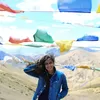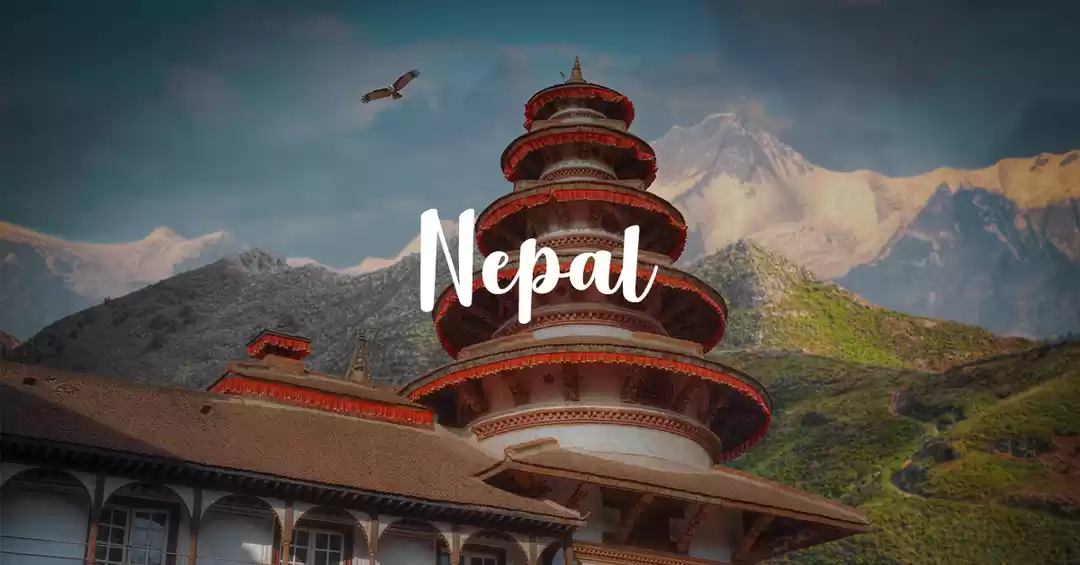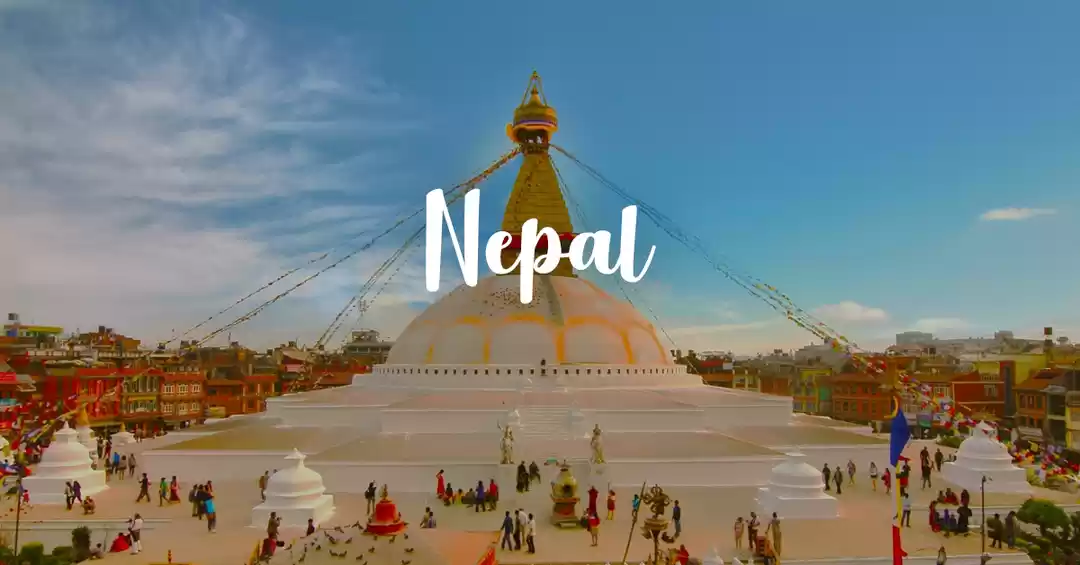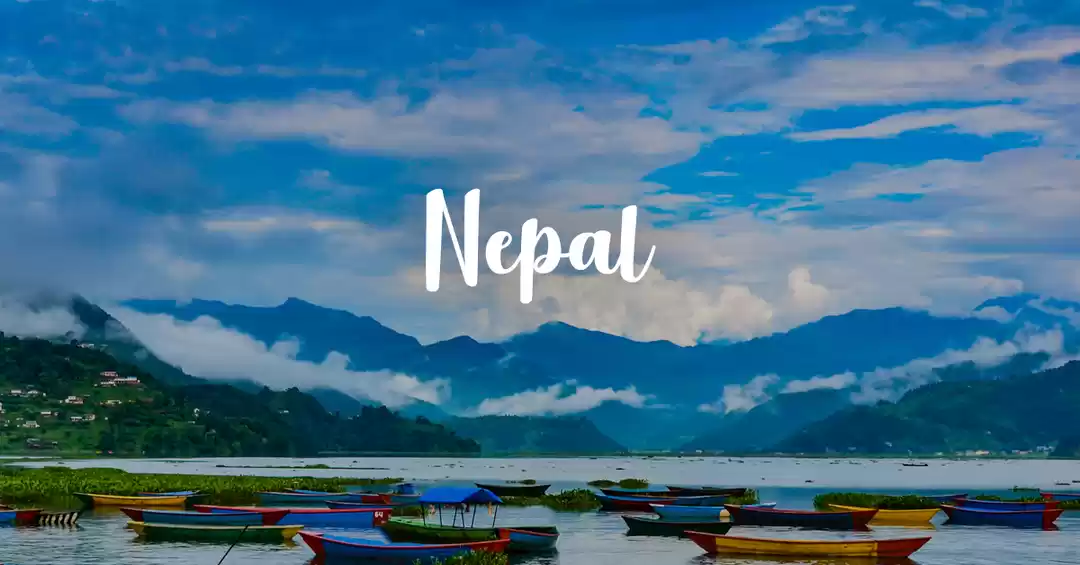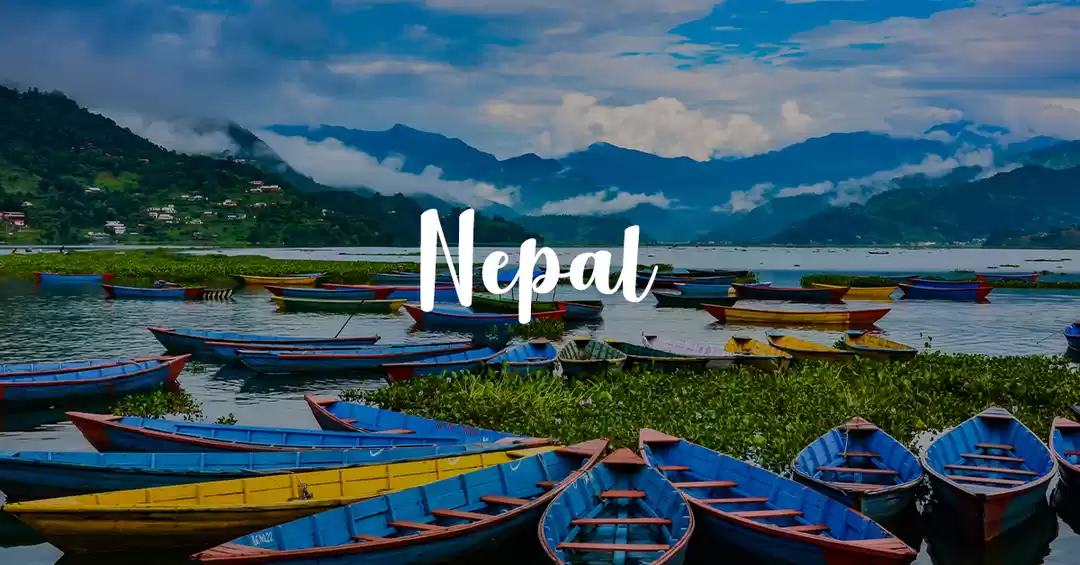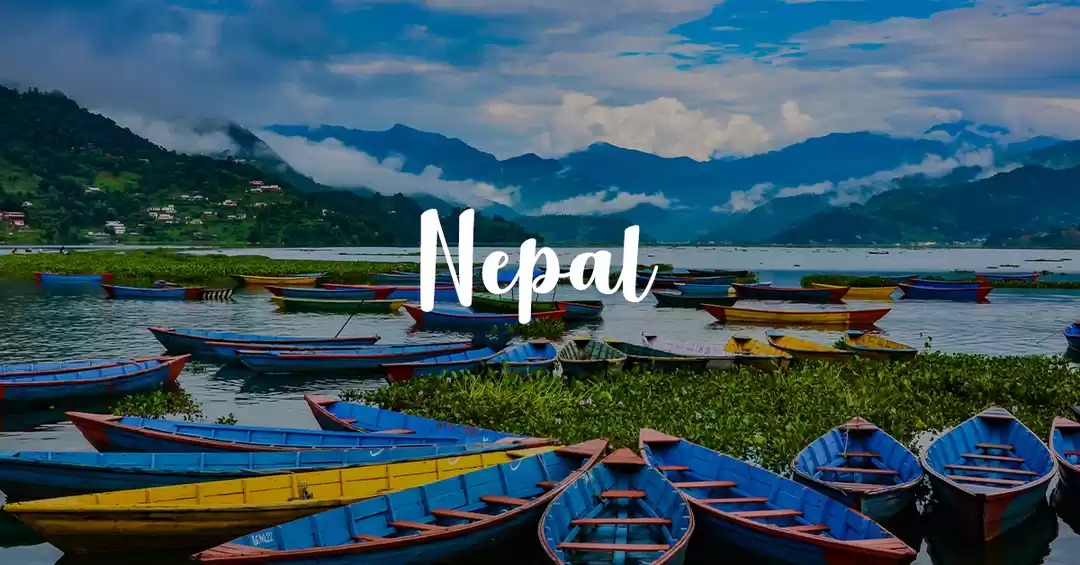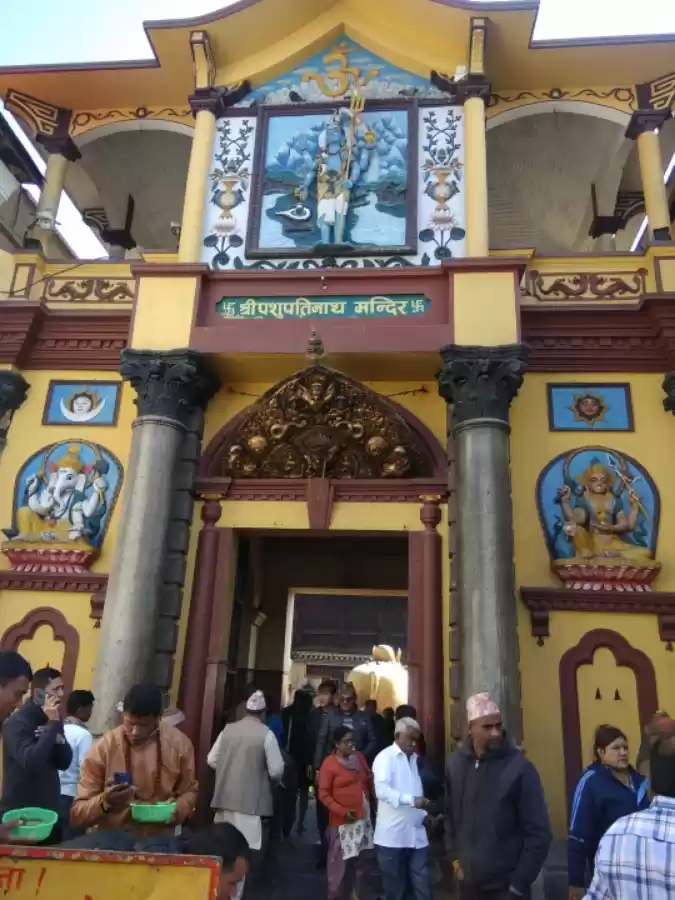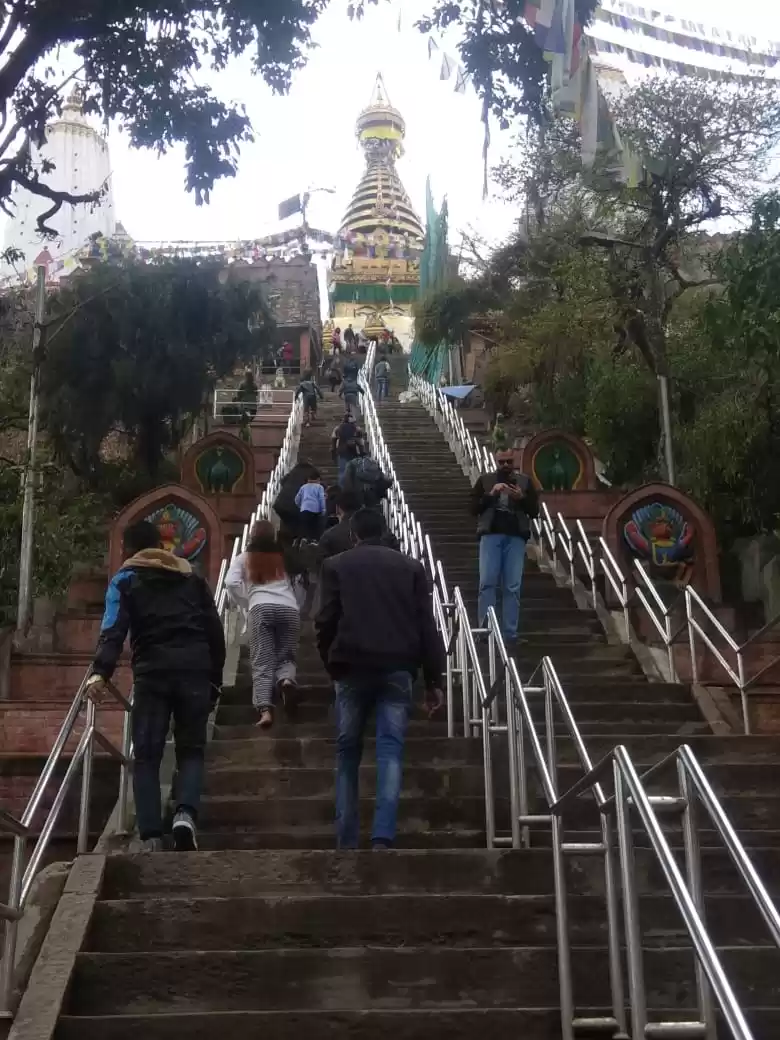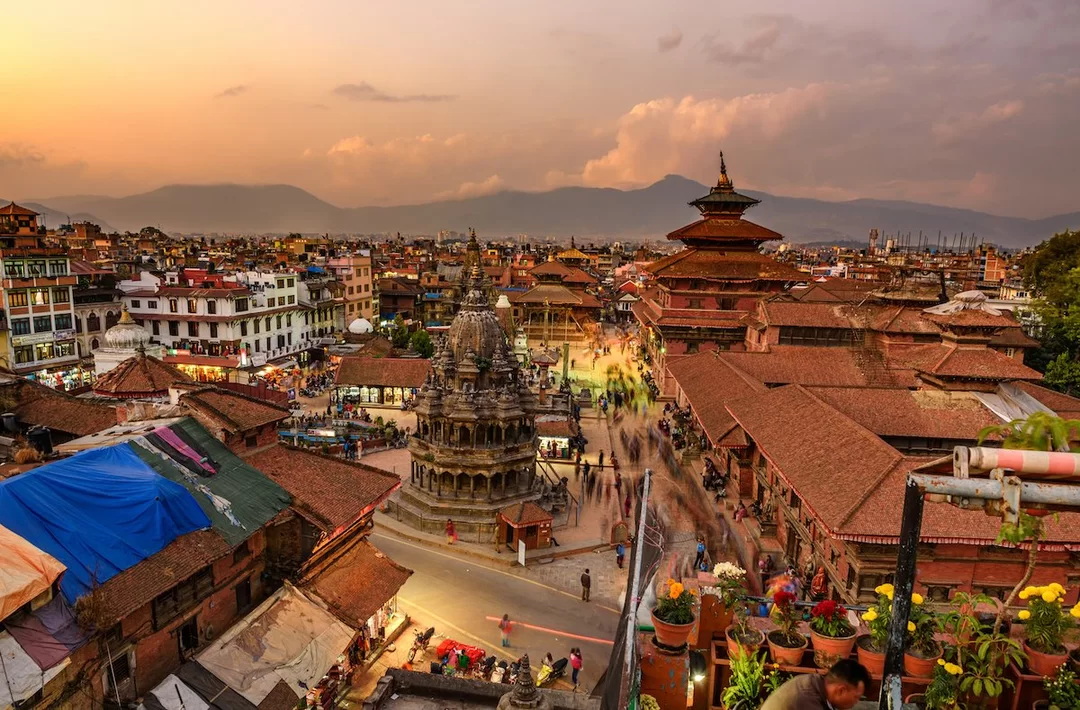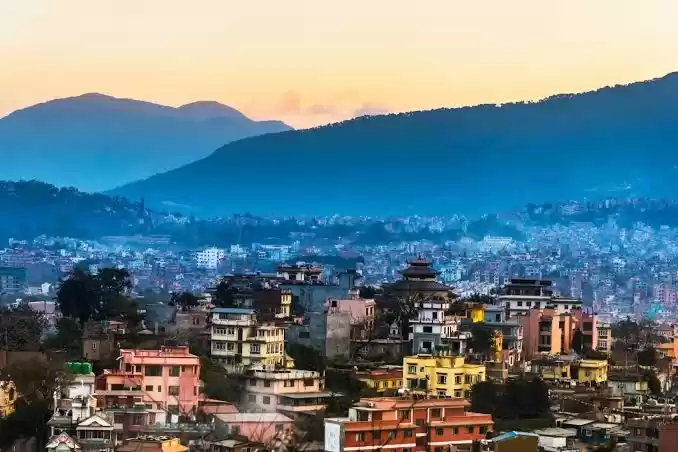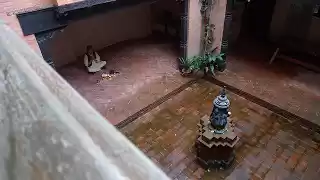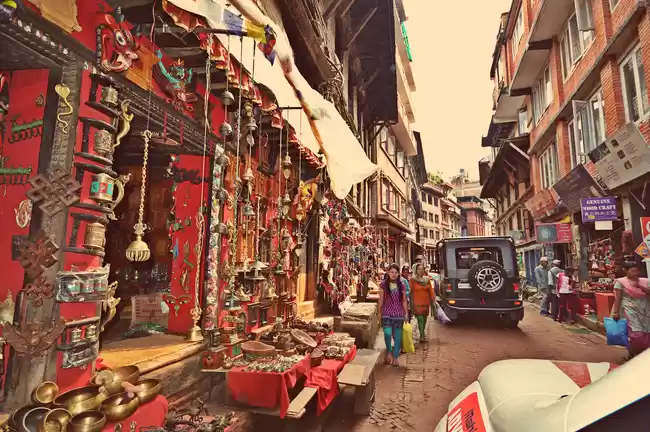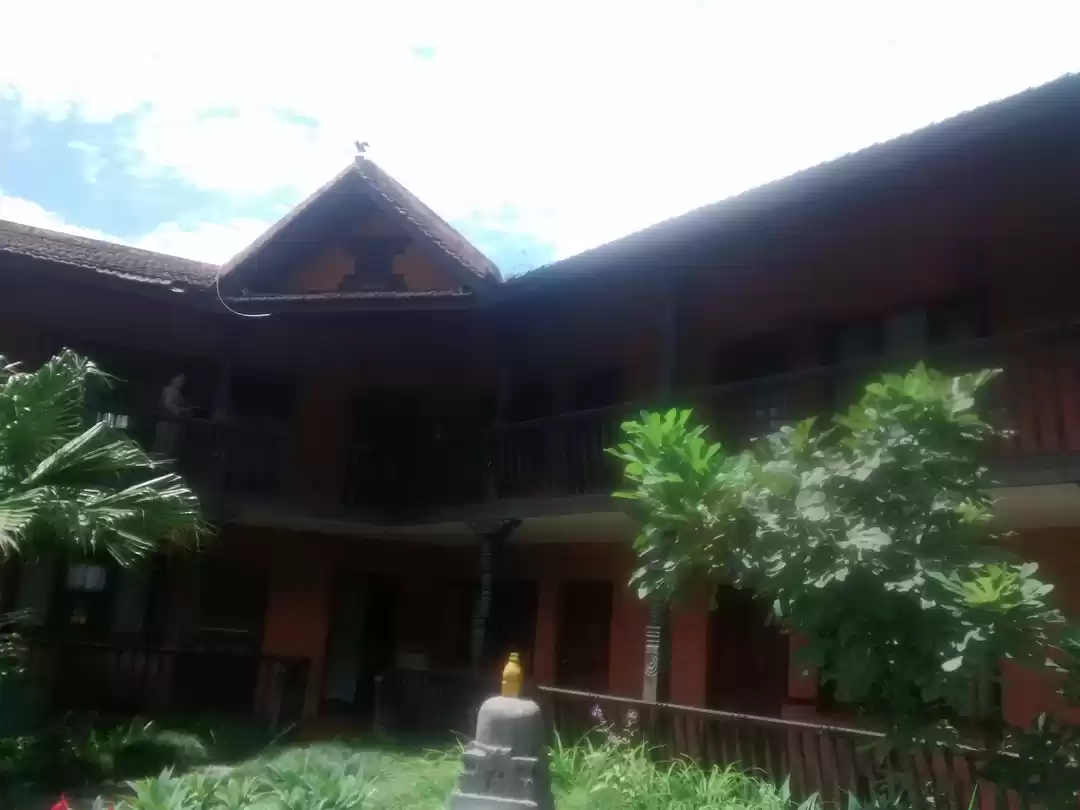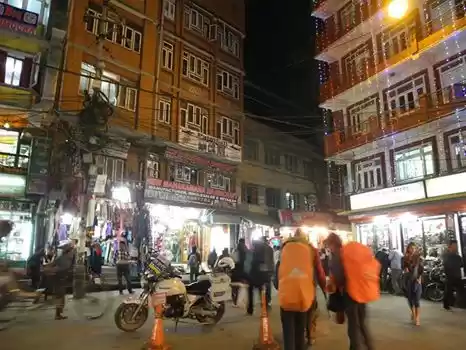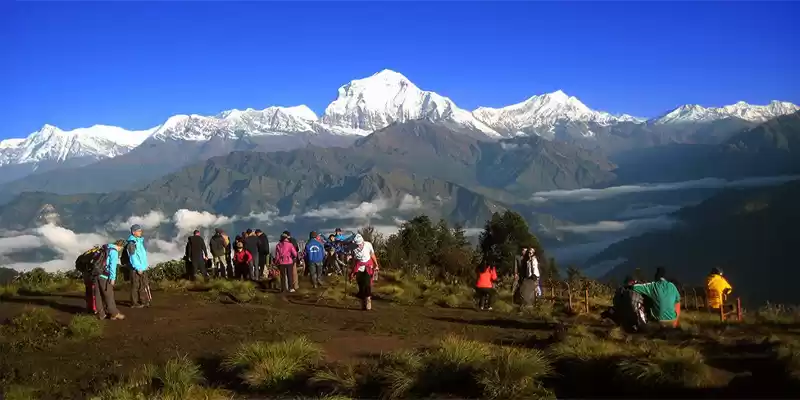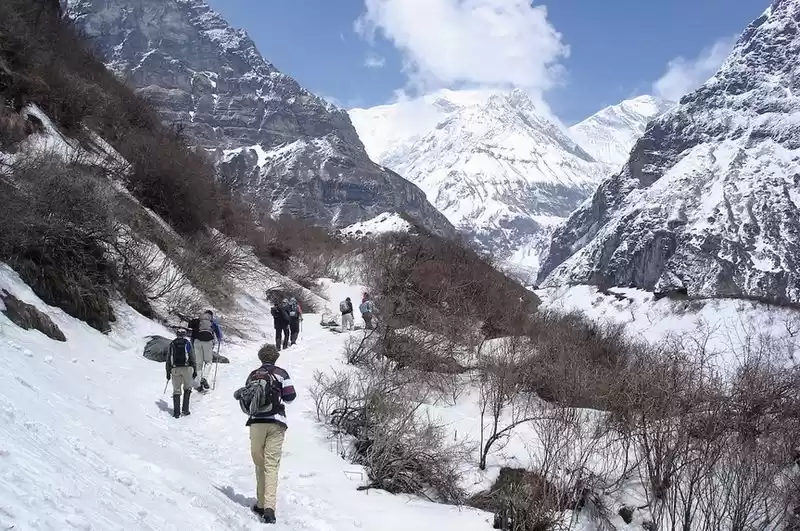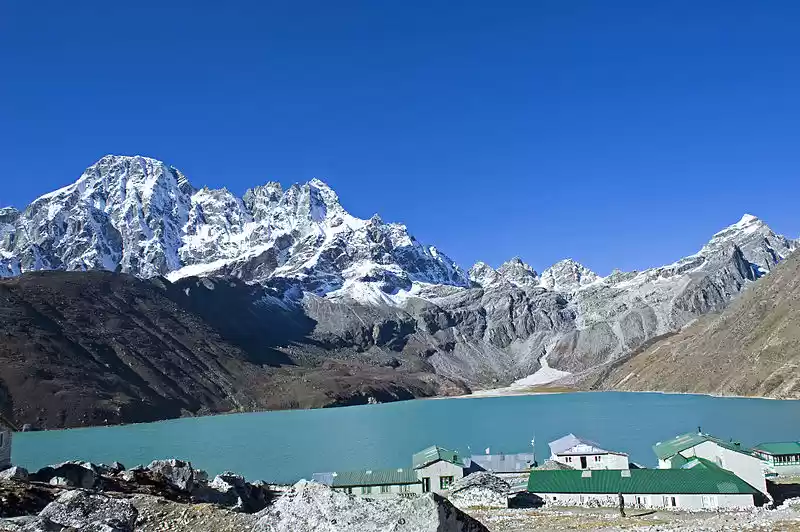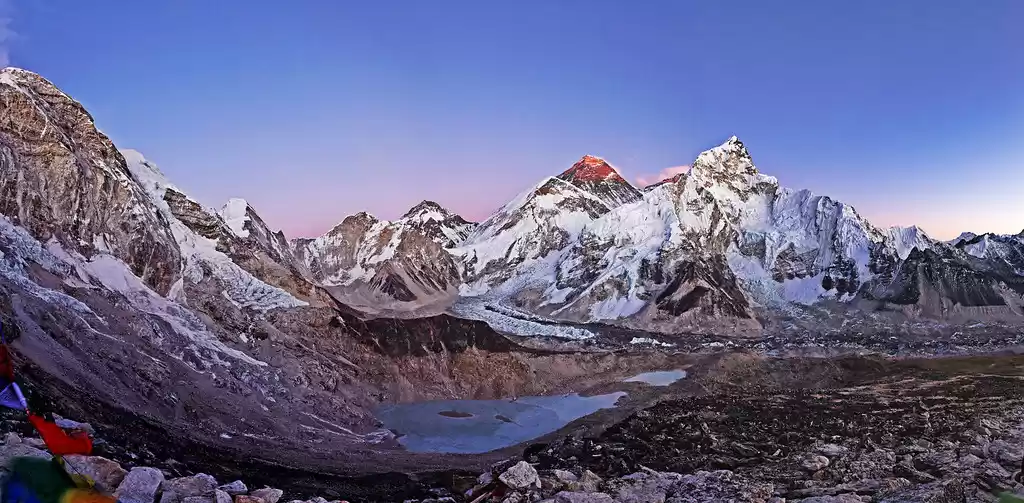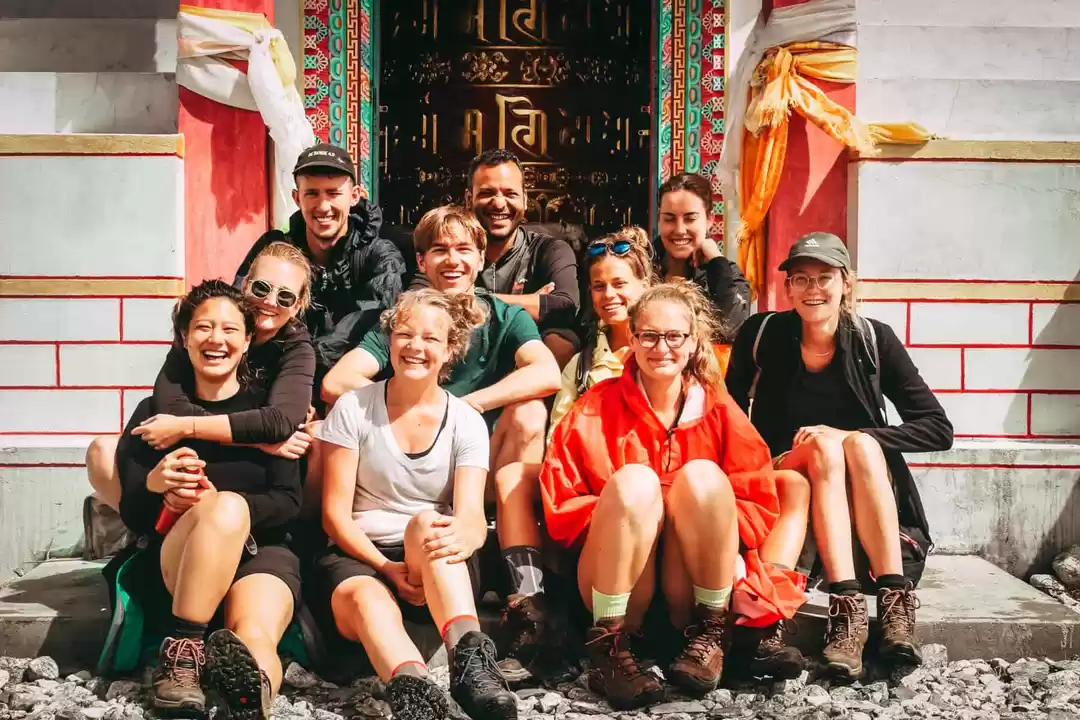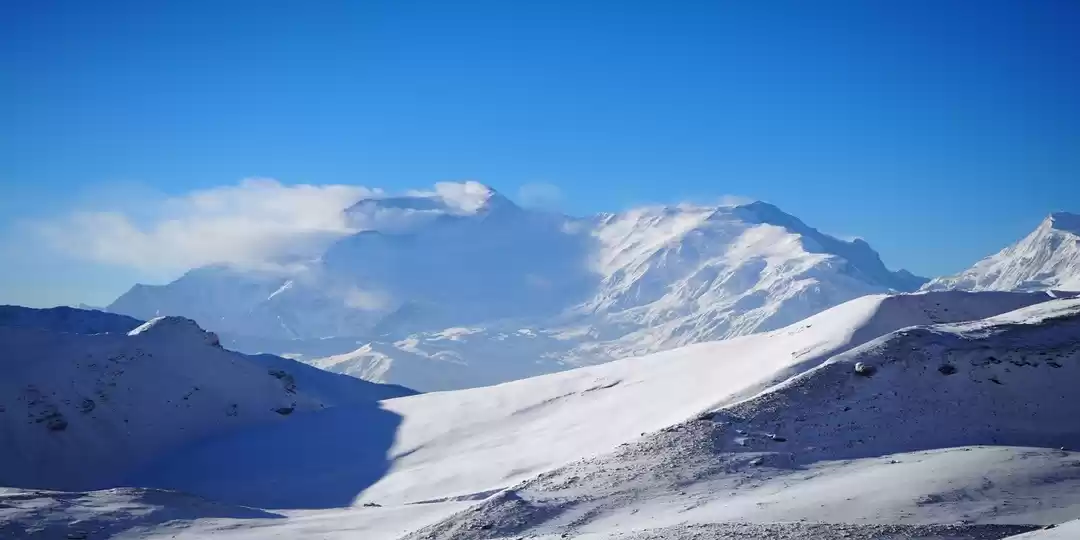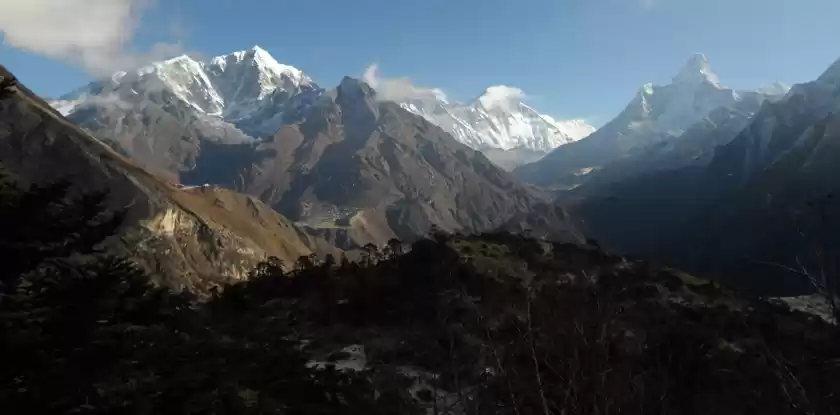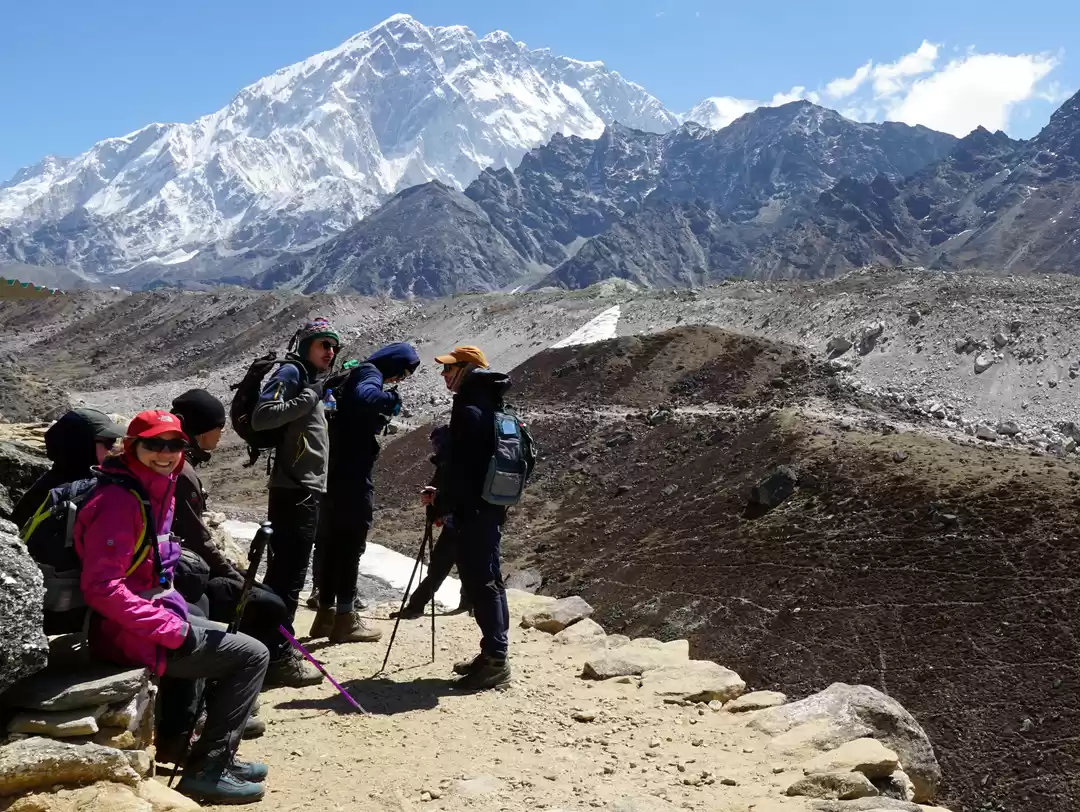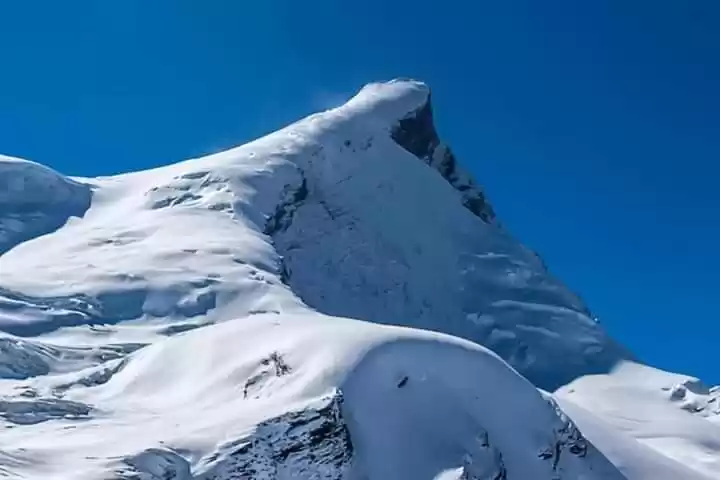When we love adventure, we go outside to seek new opportunities to explore the world and see new places. Adventure drives us to such mind-boggling destinations, that we otherwise would have never thought of exploring. Nepal, I would say, is the world's most adventurous country because its own people work in dangerous conditions on the highest mountains and people from all over the world come here to test their limit. Everest is what brought fame to Nepal, but there is so much to climb and explore in this country, than just the world's tallest mountain. Explore new, offbeat and untouched places in Nepal, to know what this beautiful country is really about.
1. Mera Peak and Base Camp Trek
The Mera Peak trek is Nepal's "highest trekking peak", with the climb difficult with a constantly increasing gradient. If you're fond of adventure, you will definitely be challenged to finish this trek. The Mera Peak is relatively unexplored, and so, you won't find too many amateurs attempting this difficult feat.

Fact:
The Mera Peak has not one, but three summits! The first one is the North Mera Peak, which is the highest (6,476m), the Central Mera Peak is the second highest (6,461m) and the third is the South Mera Peak (6,064m). Most people do not realise that they have not technically summited the mountain unless they reach the North Mera Peak point.
Route & Requirements:
Anybody attempting this trek should have a very good fitness level, because you will be expected to carry your own backpack. The toughest part of the trek will be a 20-km steep incline, after which the altitude increases gradually. Trekkers will have to cross the Zatr La Pass at 4,610m, from where you can see (on a clear sky day) four of the five highest peaks in the world – Everest, Cho Oyu, Lhotse and Makalu. This trek will give you a taste of basic mountaineering, even though you will not be using ice axes and jumars. The Mera Peak Base Camp is at 5,554m, which is higher than the Everest Base Camp at 5,380m. The best time to do this trek is in April.
Cost:
The Mera Peak trek should cost you roughly up to Rs.1,00,000 for 2 weeks, including your flight tickets to Nepal. The cost varies with different travel companies. Trekkers are required to have permits to climb the peak. You should ask for a detailed list of things to pack including the alpine gear that the trekking company will provide.
You can do this trek with Kandoo Adventures.
2. Langtang Valley Trek
While you trek in the Langtang Valley, which is home to the tribes of Newars and Tamang, the Langtang Lirung peak will cast its shadow on you. Not very far away from Kathmandu, Langtang will still give you the peace and quiet that you won't even find in Kathmandu. Trekkers can easily traverse the high altitude passes and explore the beauty of the Langtang National Park. The Great Himalaya Trails has quite a wide variety of trekking options in and around Langtang, which are suitable for all kinds of trekkers.

Fact:
The Langtang National Park covers 1,710 sq km of area and is home to the Tamang and Newar people. These tribals have separated their lifestyle from the mainland and maintain their own unique culture.
Route & Requirements:
The Langtang Valley trek is famous for its diversity of sights. From Kathmandu, you will go to Syabrubesi to acclimatise with a small day hike. From there you will move to Mundu via Langtang Village. Here onwards, the routes will change depending on which trek you have taken. The best time for this trek is from September to December and March to May.
Cost:
You will need a minimum of one week for this trek, and the average cost of the Langtang Trek will be around Rs.60,000, excluding the flight tickets.
You can do this trek with Himalayan Glacier.
3. Helambu Valley Trek
Experience the local culture and hospitality of the Hyolmo Tribe, and gaze at the glistening peaks of the world in the horizon while in Helambu. This trek is perfect for those who cannot too many days off and need a shorter, more practical route to trek. The Helambu trek is dotted with rhododendron trees and greenery, while at some patches you will see clear grounds of the countryside.

Fact:
From the high altitude pass along the route on this trek, you will have a direct view of the valley on the other side, which will be in Tibet!
Route & Requirements:
The Helambu trek is an easy-level trek as you do not ascend to higher ground. Trekkers are, however, expected to be fit and ready to face cold weather unexpectedly. The route will go along the Nepal-Tibet border, so you will be able to see both sides clearly. The trek usually begins from Sundarijal, a small hamlet an hour away from Kathmandu. There will be many Buddhist monasteries to see along the way as well, so you are guaranteed to have witnessed the true spirit of Nepal. The best time to go for this trek is from September to December when it is not very cold.
Cost:
You will need at least a week to finish this trek. The Helambu trek will cost you approximately Rs. 75,000, excluding the flight tickets.
You can do this trek with Himalayan Glacier.
4. Rara Lake Trek
Enamour yourself with the beauty of the Rara Lake, which is the largest lake in Nepal. The lake is in close proximity to the airstrip, yet does not experience an overflow of tourists. Unlike other treks where you will come across other groups of trekkers, Rara Lake is unexplored and virgin in its beauty. You will be surrounded by untouched wonders of nature, with an ever increasing variety of flora and fauna. The crystal clear blue water of the lake will be magical in its beauty leaving you awestruck.

Fact:
An interesting fact about the surrounding area of the lake is that it grows medicinally valuable fungus called 'Yarchagumba' that grows out of the head of caterpillars!
Route & Requirements:
You will be traversing routes in Mugu, Jumla, Padmara and other small villages along the way, where you will come across the different local tribes and their authentic cultures. The trek is considered a difficult trek because you have to navigate through dense jungle and sometime steep climbs. The maximum altitude gained will be 3,900m. You will need two weeks for this trek and on an average day, a trekker will walk for at least 15 km. The best time to do this trek is in September to November.
Cost:
The average cost for this trek, excluding the flights, will be close to Rs.1,00,000. Please cross check with the organiser about permits, as permits are required to go to the interior parts along this trekking route.
You can do this trek with Great Himalaya Trails.
5. Phoksundo Lake Trek
Trekking up to the Phoksundo Lake is an adventure, where you cross mountain passes, forests, village trails and quaint spiralling brooks. The lake is considered the deepest in Nepal, and reflects different blue hues of the sky. While trekking in this region you will be entering the largest, and the only Trans-Himalayan national park.

Facts:
The Ringmo village south of the Phoksundo Lake, is home to one of the oldest tribes in Nepal and while trekking in this region you will be able to see how long established their heritage is.
Route & Requirements:
The route of the trek goes through Nepaljung, Chhepka, Rigmo village and the prestigious Bon Monastery. The trek is of a medium-difficulty level and the trekker is expected to be fairly fit. The maximum altitude gained will be 3,608m. Permits are needed to enter the Phoksundo National Park. Best time to do this trek is in December.
Cost:
The trek will cost you around Rs. 90,000, excluding flight tickets. You need around 18 days to complete this trek.
You can do this trek with Great Himalaya Trails.
6. Panch Pokhari Trek
Just like the name says, the Panch Pokhari Trek takes you to some of the most isolated lakes in Nepal. A collection of five lakes, this trek takes you through dense jungle and rugged mountain paths to reach a surreal sight. The lakes will captivate you with their magnificent beauty. These five lakes are far away from the hustle bustle of Kathmandu, so peace is guaranteed!

Facts:
These five lakes are considered to be holy and every year Buddhists and Hindus take a pilgrimage to this place. Even though it is visited by devotees, the lakes have been safe from humans because of strict rules.
Route & Requirements:
To reach the starting point of the trek, you have to travel 5 hours east from Kathmandu in a bus. There onward you will start trekking to villages close to the Tibetan border, such as Sano Okhareni. After crossing five villages in five days, you will reach Panch Pokhari. At some points on the route, you will be able to see Kanchenjunga and Makalu. This is a moderate level trek. You will need 12 days to finish this trek. The trek can be done all year around except in the monsoon season, recommended month is October.
Cost: The cost for the trek will be on an average Rs. 80,000 t0 90,000, excluding the flight tickets. Permits are required to go to Panch Pokhari.
You can do this trek with Himalayan Trails.
7. Tilicho Lake Trek
Nestled carefully in the Annapurna range, the Tilicho Lake is a high altitude lake in Nepal that is unexplored. The lake is so isolated that you will find no settlement anywhere close to it. Trekkers who attempt the Annapurna Base Camp trek use this route, other than the more treacherous one, which requires an overnight halt in nearby villages. The scenery of the Tilicho Lake cannot be compared with any other lake in the world.

Fact:
The Tilicho Lake is the highest lake in the world at an altitude of 4,949m above sea level. This lake is also the highest scuba diving site. In winters, the Tilicho Lake becomes inaccessible because of heavy snowfall.
Route & Requirements:
The route for this trek begins at Besisahar like the normal Annapurna trekking circuit. All along the trekking path, you will see 8,000m peaks of the Himalayas. During this trek you will also go through the last village in Nepal which is Khanshar village and the highest pass in the region; Tharang La. This is a difficult trek, and prior experience would be beneficial. The maximum altitude gained will be 5,416m.
Cost:
The trek cost varies from Rs. 60,000 to Rs. 90,000 as per the number of days you decide to trek. The minimum number of days required to finish this trek is 12 days. Flight tickets are not included in this.
You can do this trek with Unique Paths.
8. Ama Dablam Base Camp Trek
The Ama Dablam trek is one of the most sought after by mountaineers. People who are not skilled to climb a mountain are encouraged to trek to the base camp of this magnificent mountain! While you trek this route, you will experience an adrenaline rush, with the highest peaks of the world overlooking you at every step. Ama Dablam is a soothing sight after a difficult climb!

Fact:
Ama Dablam means 'mother's necklace' and is also sometimes referred to as the 'Matterhorn of the Himalayas'. The image of the mountain has been used as a logo for many international companies, one of them being Aqua Mineral Russia.
Route & Requirement:
You will be trekking through various villages, such as Deboche, Khunde, Khumjung and the Thyangboche Monastery. Along the entire route you will be increasing altitude with a gradual incline. There will be many opportunities to interact with the local Sherpa families and be a part of their hospitality. After reaching the base camp you will get an easy 360 degree view of the ridge line that surrounds you with mighty Himalayan peaks. This is a difficult level trek. The best time to do this trek is in March.
Cost:
The cost of this trek varies with every company, however the average cost of the expedition including permits and most of the equipment is an approximate Rs. 1,85,000. You will need 2 weeks for this trek.
You can do this trek with World Expeditions.
9. Cho Oyu Base Camp trek
Another relatively unclimbed and unvisited mountain is Cho Oyu, which is half in Nepal and half in Tibet. Cho Oyu is an incredible mountain for climbers, and the perfect trekking option because unlike the Everest, Lhotse and Makalu base camp, this one is relatively less populated. Even though Cho Oyu comes in the list of the highest peaks in the world, its beauty is unique.

Fact:
Cho Oyu means 'The Turquoise Goddess'. According to Peaks Of Nepal, "Another alternative translation of the name is "bald god". This makes sense looking at a Tibetan legend, where Cho Oyu, the bald god, has his back turned to Chomolongma, the mother goddess, because she refused to marry him."
Route & Requirements:
This mountain is situated on the China-Nepal border, so it is advisable that you start your trip from Lhasa and then enter Nepal from the Tibetan side. You will require permits for every camp you stay in. This trek is moderate, as compared to other treks. Your route will vary, depending on which side you approach the mountain from. Trekkers are expected to be at the peak of fitness. The best time to do this trek is in November.
Cost:
The approximate cost of this expedition will be around Rs. 80,000, excluding the flight tickets to Lhasa and back. You will need 2 weeks to finish this trek. You will be going up treacherous routes that involve steep climbs at some stretches. Please make sure that you have all the permits required for this trek as you will be going from Tibet into Nepal.
You can do this trek with International Mountain Guides.
10. Gokyo Ri Trek
Gokyo Ri is a peak in the Khumbu region, located just next to the Ngozumpa Glacier, which is considered the largest glacier in the Himalayas as well as in Nepal. The Gokya Ri trek includes a trek to the Gokyo lakes, and from the Gokyo Ri you can easily see some of the 8-Thousander peaks in Nepal, such as Makalu, Lhotse, Cho Oyu and Everest. The Gokyo Lakes are one of the most pristine lakes in the world.

Facts:
The hamlets at the base of Gokyo Ri are the highest settlements in the world. The Gokyo village consists only a handful of houses and borders the Sagarmatha National Park.
Routes & Requirements:
This is a moderate trek, and trekkers have to be ready to face unexpected weather conditions. The maximum altitude gained while trekking will be 5,357m. On this trek you will be crossing few mountain villages, climbing up the Gokyo Ri and then trekking further to the Gokyo Lakes. Trekkers will be walking for 6 hours in a day. All permits will be included in your cost.
Cost:
The approximate cost of the trek will be close to Rs. 1,30,000 excluding the flight tickets. Ideally your expedition company will cover the permit cost in this as well. You will need 2 weeks to finish this trek.
You can do this trek with Himalayan Glacier.
Which one are you doing next?

